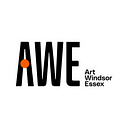7 Women Artists You Should Check out during Women’s History Month — and beyond!
Written by Micaela Muldoon, Digital Initiatives Coordinator at The Art Gallery of Windsor
Even though International Women’s Month is coming to a close, you can still support incredible women artists all year round! There are so many women artists out there, flying under the radar, historically underrated simply because of their gender. Many of them were not only superbly talented, but also fought back against misogyny and racism, often empowering others in the process. Here are just a few of them:
Prudence Heward (b. July 2, 1896, Montreal; d. March 19, 1947, Los Angeles)
Heward was part of the famous Beaver Hall Group of Canadian Artists, which included both men and women — something that was rare for artist groups at the time. She didn’t paint women in an idealized way — passive, feminine, delicate. Instead, she painted them with realistic body standards and facial expressions true to their emotions. Her women subjects were bold, challenging, and psychologically complex.
Pitseolak Ashoona (b. 1904, Nottingham Island (Tujajuak), NWT; d. May 28, 1983, Cape Dorset, NWT) Napachie Pootoogook (b. June 26, 1938, Qikiqtaaluk, NWT; d. December 18, 2002, Cape Dorset, NU) Annie Pootoogook (b. May 11, 1969, Cape Dorset, NU; d. September 19, 2016, Ottawa)
Pitseolak Ashoona, Napachie Pootoogook, and Annie Pootoogook were three generations of Inuit women from the same family: grandmother, mother, and child, respectively. The three of them portrayed Inuit life as they witnessed it. Pitseolak’s subjects were typically the traditional lifestyles and mythos of her culture. Napachie addressed the darker side of Inuit life, particularly the aspects that were oppressive to Inuit women, not shying away from horrific realities like human trafficking and cannibalism. Annie Pootoogook drew detailed pictures of modern Inuit life, especially as it was influenced by technology, challenging the commonly-held notions of what Inuit art “should” look like. The works of the three were featured together in an exhibition called Akunnittinni: A Kinngait Family Portrait, where the pieces were curated to be in dialogue with each other.
Frances Loring (b. October 14, 1887, Wardner, ID; d. February 5, 1968, Newmarket, ON)
Florence Wyle (b. November 14, 1881, Trenton, IL; d. January 14, 1968, Newmarket, ON)
It has long been speculated that Loring and Wyle, two American-Canadian sculptors, were romantically involved, though it hasn’t been proven. Whether the two were lovers or friends, they were very close and lived most of their lives together, defying society’s expectations that they should marry and have children. These two talented artists were commissioned to document, through sculpture, women’s efforts on the home front during WWI. Sculpture was not a highly-regarded art form when the two of them began their practice, and it required more physical strength than painting or drawing did. Loring and Wyle were true rebels.
Daphne Odjig (b. Septempter 11, 1919, Wikwemikong, ON; d. October 1, 2016, Kelowna, BC)
For a while, Odjig tried to hide her Odawa-Potawatomi heritage, scared of the racism she faced. This didn’t last long, though; after a life-changing powwow, she embraced her heritage with pride and let it show in her art. She established Professional Native Indian Artists Inc., of which she was the only woman member. She eventually established a gallery of her own, the first in Canada to exclusively purchase and curate Indigenous art, solidifying the fact that Indigenous artists don’t need Western “approval” for their art to be legitimate.
